
[card]Scapeshift[/card]: the bane of my Modern existence. For as long as Valakut, The Molten Pinnacle, [card]Scapeshift[/card] and [card]Primeval Titan[/card] have been legal, the “get mountains out of my deck and bolt your face” win condition has been my personal favorite. This started in Extended and when Modern became the most played format in town, I knew right away what deck to build. For those still uncertain on how the combo works, in the case of [card]Scapeshift[/card], all you need to win the game is 7-8 lands in play, and 6 mountains plus a number of [card]Valakut, the Molten Pinnacle[/card]s in your deck. Once [card]Scapeshift[/card] resolves sacrifice all your lands. Then put Valakut and 6 mountains into play (RTR shock lands and the new BFZ battle lands for access to green should something go wrong). This will result in 6-12 Valakut triggers, 6 if 1 Valakut was fetched, 12 if 2. This gives us at least 18 damage to direct towards our opponent.
In such a deep and uncharted format as Modern the depths of deckbuilding theory and history for this particular strategy might surprise you. The question you’ll first encounter is a rather simple one, which has recently become much more interesting: How to build a supporting deck around the combo? For that, allow me to take you through not only the format’s history, and the [card]Scapeshift[/card] lists that made it to the top tables, but also my personal journey with the deck; how it changed through the years, and where it stands now that the deck’s number 1 enemy, Twin, has vanished.
The Beginnings: Extended

When we first visited Zendikar and came across [card]Valakut, the Molten Pinnacle[/card] the first [card]Scapeshift[/card] decks were brought to light. Throughout Zendikar block Extended there were two distinct versions of deck that created a duality which persists to this day. The first version was RG [card]Scapeshift[/card], a linear ramp deck that killed the opponent half the time with [card]Scapeshift[/card] and the other half through “fair” [card]Primeval Titan[/card] triggers searching for mountains to trigger Valakut. This version was slim, streamlined, and straight to the point.
RG Shapeshift – Brian Su – 2011 PTQ Nagoya, Edmonton, 1st place
[deck]
[Lands]
2 Evolving Wilds
5 Forest
2 Misty Rainforest
11 Mountain
1 Raging Ravine
2 Terramorphic Expanse
4 Valakut, the Molten Pinnacle
[/Lands]
[Spells]
2 Cultivate
4 Explore
3 Khalni Heart Expedition
4 Lightning Bolt
2 Primal Command
3 Prismatic Omen
4 Rampant Growth
3 Scapeshift
2 Volcanic Fallout
[/Spells]
[Creatures]
1 Acidic Slime
1 Oracle of Mul Daya
4 Primeval Titan
[/Creatures]
[Sideboard]
2 Acidic Slime
3 Guttural Response
1 Inferno Titan
3 Kitchen Finks
3 Nature’s Claim
1 Ratchet Bomb
1 Reverberate
1 Volcanic Fallout
[/Sideboard]
[/deck]
RG’s counterpart was a complex and somewhat more successful version. Instead of Titans it focused on the [card]Scapeshift[/card] combo. It was a control shell using Wargate as not only a ramp spell with x=0, but also as a fetch for [card]Prismatic Omen[/card]. The Omen lets a 6 land [card]Scapeshift[/card] resolution search for 4 Valakuts and 2 other lands. All of the lands are now mountains, thank you [card]Prismatic Omen[/card]. All the valakuts see all the other lands and they all trigger thereby dealing lethal damage. It is in this version that we see the first appearance of one of the most important cards in the modern [card]Scapeshift[/card] builds, 4 copies of [card]Cryptic Command[/card]. A single card so strong that a base RG deck went deep into a blue mana base. The deck had to be able to produce 1UUU, 2GG and WUGX mana consistently. Despite the tough mana, the hurdles were sure worth it. The resulting deck was my starting place for experimenting with the combo. The addition of Wargate as a tutor had a further implication that was indicative of [card]Scapeshift[/card] archetypes yet to come.
Warget – Makahito Mihara – 2011 GP Kobe, 2nd place
[deck]
[Lands]
3 Exotic Orchard
1 Fire-Lit Thicket
1 Forest
2 Island
4 Misty Rainforest
7 Mountain
1 Murmuring Bosk
1 Plains
4 Seaside Citadel
4 Valakut, the Molten Pinnacle
[/Lands]
[Spells]
4 Cryptic Command
4 Explore
4 Manamorphose
4 Preordain
4 Prismatic Omen
4 Rampant Growth
4 Scapeshift
4 Wargate
[/Spells]
[Creatures]
4 Oracle of Mul Daya
[/Creatures]
[Sideboard]
2 Firespout
2 Fracturing Gust
2 Pyroclasm
2 Qasali Pridemage
2 Vendilion Clique
2 Vexing Shusher
3 Wall of Tanglecord
[/Sideboard]
[/deck]
The Modern days
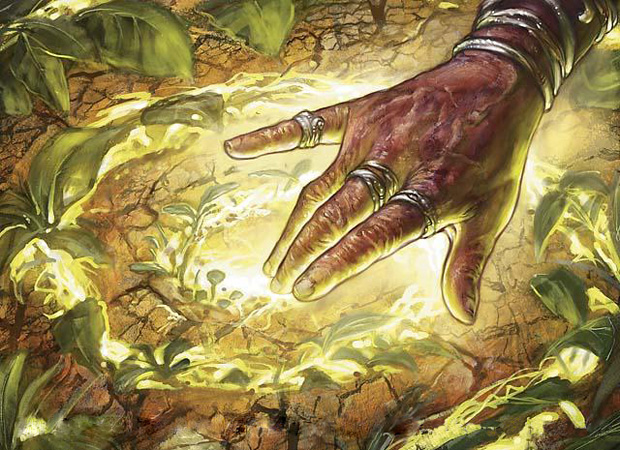
If Extended was a good source of diverse [card]Scapeshift[/card] strategies, then surely the massive fertile field of the Modern card base could yield an increase in viable options. While a wider format might imply some strategic creativity, it also comes with its share of strong lists that tax any deckbuilder’s dream of going off the deep end with deck ideas. Not only can you not afford to play cards with textboxes that don’t interact with the format’s top combos, but you must also face the power level problem of not playing with these combos yourself. With all that in mind, the “optimal” version of [card]Scapeshift[/card] was developed. The creativity and metagaming stemmed from the details and slots that were never fully set in stone.
RUG Scapeshift: The Essentials
4 [card]Scapeshift[/card]: …. We can’t call it [card]Scapeshift[/card] without this card.
4 Sakura-tribe Elder: The best version of rampant growth. The deck is historically weak to the most aggressive archetypes. Elder’s ability to blank an attacker and ramp is too useful to pass up. It is an auto 4 of in any [card]Scapeshift[/card] list.
4 [card]Search for Tomorrow[/card]: The best all-around ramp spell of the format, if you’re running basic lands. Search is the deck’s best turn 1 play. When paired with Tribe Elder on turn 2 the deck can easily get to and fix the 4 mana needed to cast [card]Cryptic Command[/card] by turn 3.
4 [card]Remand[/card]: As a combo deck the counter spells and removal, like [card]Electrolyze[/card], are all intended to fill their purpose while cycling. For that reason [card]Remand[/card] is the best option from the soft counters available.
4 [card]Cryptic Command[/card]: The reason to be playing blue in the first place; Cryptic Command’s flexibility and the problems it tackles are endless. Dismiss is the most common usage for the card. once more the importance of cycling shows up. You’ll routinely see [card]Scapeshift[/card] players using Cryptic to buy time with the tap all creatures mode, and getting out of difficult situations by bouncing problematic permanents like [card]Blood Moon[/card], Choke, [card]Leyline of Sanctity[/card] and others, in order to combo on the following turn.
4 [card]Lightning Bolt[/card]: While playing RUG you might notice the lack of removal options. Therefore, Bolt is our go to. Since red is the bona fide splash in the deck, we leave Bolt to deal with small threats and buy us time to resolve our more important spells such as Cryptic and [card]Scapeshift[/card].
This is where almost every [card]Scapeshift[/card] lists starts. 24 slots that are hard to argue against. Couple them with an assortment of cantrips, removal and value cards to close out the nonland cards to create a traditional RUG [card]Scapeshift[/card] list.
RUG Scapeshift – Joe Russel, SCG Cincinnati Open
[deck]
[Lands]
2 Breeding Pool
1 Cinder Glade
3 Forest
3 Island
2 Lumbering Falls
4 Misty Rainforest
1 Mountain
4 Steam Vents
4 Stomping Ground
2 Valakut, the Molten Pinnacle
[/Lands]
[Spells]
1 Anger of the Gods
2 Anticipate
4 Cryptic Command
2 Electrolyze
1 Izzet Charm
4 Lightning Bolt
4 Remand
4 Scapeshift
4 Search for Tomorrow
2 Serum Visions
[/Spells]
[Creatures]
4 Sakura-Tribe Elder
2 Snapcaster Mage
[/Creatures]
[Sideboard]
2 Ancient Grudge
1 Anger of the Gods
1 Crumble to Dust
2 Dispel
1 Keranos, God of Storms
1 Negate
4 Obstinate Baloth
2 Rending Volley
1 Shatterstorm
[/Sideboard]
[/deck]
Going Against the Grain
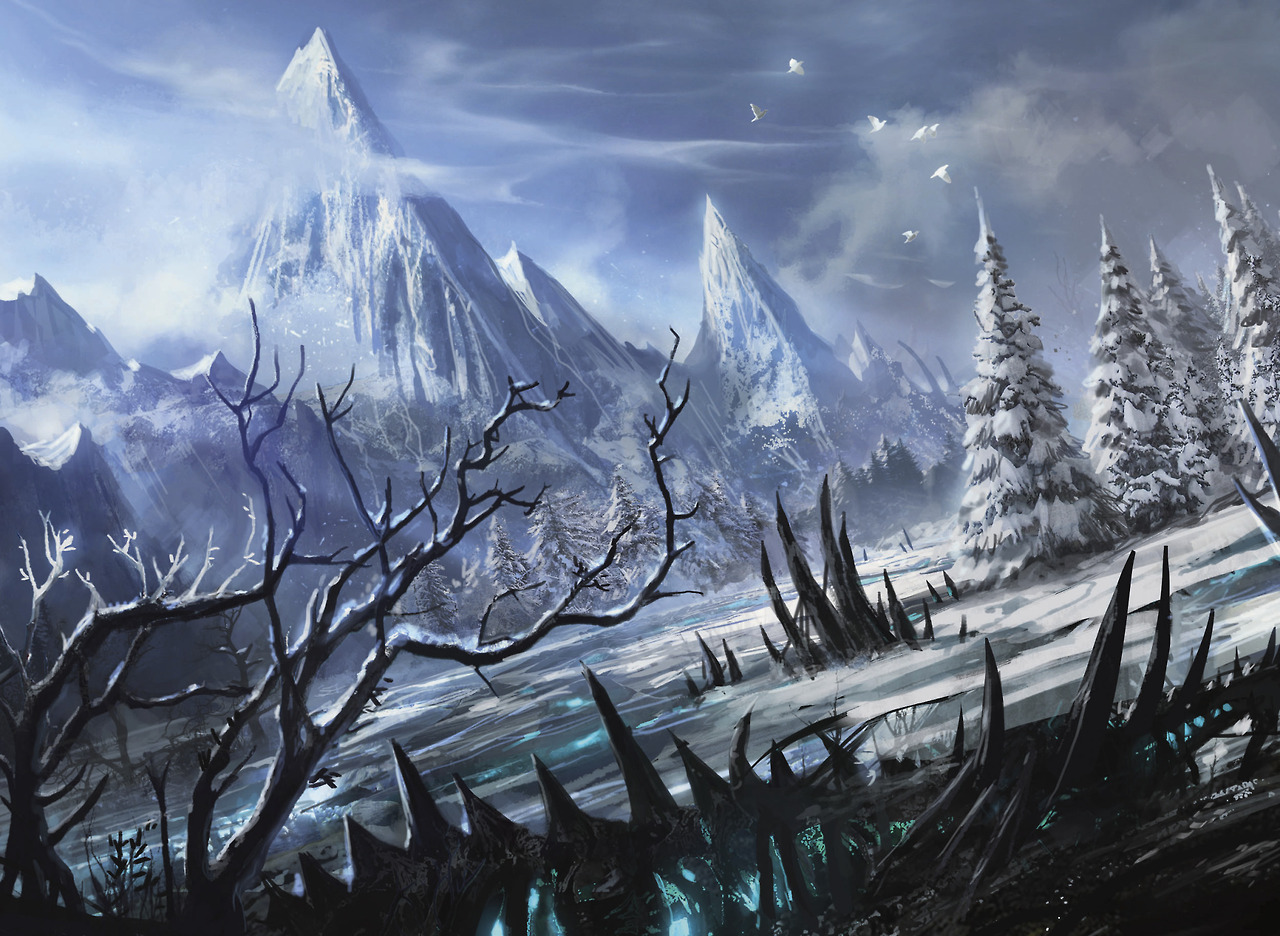
A traditional [card]Scapeshift[/card] list was not what I was looking for when I first started playing Modern. The deck’s main struggles remained; the inability to win a game without drawing the kill card and surviving until that does happen. My take on the list at was first focused on the consistency problem. [card]Gifts Ungiven[/card] is the well I went to. A well I thought to be way too deep at first. I stayed out of the [card]Unburial Rites[/card] shenanigans and kept it to [card]Eternal Witness[/card], [card]Snapcaster Mage[/card] and [card]Noxious Revival[/card]. By selecting an assortment of those cards, plus [card]Scapeshift[/card], the opponent had no option but to give us either [card]Scapeshift[/card], or a card that recurs it. It was a great draw spell for when you did have the kill card. It allowed us to search for different counter spells and value cards with the occasional bluff of adding [card]Scapeshift[/card] to the gifts when not needing it. A pretty solid strategy if you can rely on your graveyard. Lists with Gifts still pop in from time to time. Below is a list that can particular can count on Gifts early in the game as a tutor for [card]Firespout[/card] and other removal spells. What keeps this version from being the number 1 option is that there is a better toolkit version of the deck (that’s what we call a tease in the industry).
Scapeshift Gifts
[deck]
[Lands]
3 Breeding Pool
1 Cinder Glade
1 Flooded Grove
3 Forest
3 Island
4 Misty Rainforest
1 Mountain
4 Steam Vents
4 Stomping Ground
2 Valakut, the Molten Pinnacle
[/Lands]
[Spells]
3 Cryptic Command
1 Electrolyze
1 Firespout
3 Gifts Ungiven
2 Izzet Charm
3 Lightning Bolt
1 Noxious Revival
4 Remand
1 Repeal
4 Scapeshift
4 Search for Tomorrow
[/Spells]
[Creatures]
1 Eternal Witness
4 Sakura-Tribe Elder
2 Snapcaster Mage
[/Creatures]
[Sideboard]
1 Ancient Grudge
1 Dispel
1 Firespout
1 Krosan Grip
1 Nature’s Claim
1 Negate
4 Obstinate Baloth
1 Pyroclasm
2 Shatterstorm
1 Thragtusk
1 Wurmcoil Engine
[/deck]
Standing Atop the Pinnacle
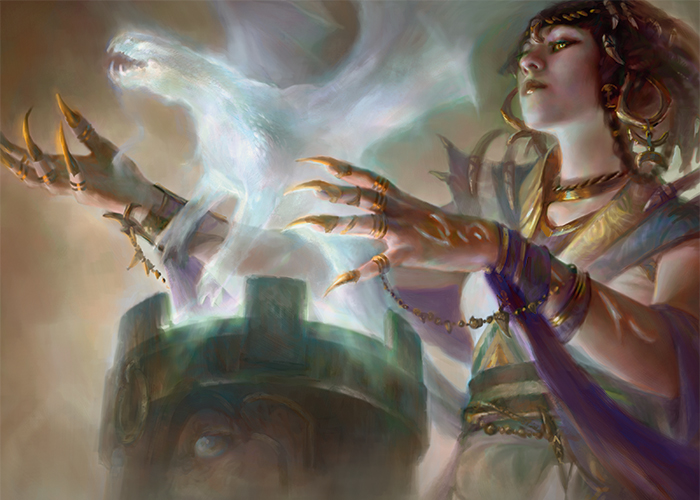
For a brief moment in Modern’s history 2 completely broken cards from Khans of Tarkir were legal in the format. UR Delver with 4 [card]Treasure Cruise[/card] was considered the best deck in the format, it’s hard argue against what was basically a Legacy deck being played in Modern. The [card]Scapeshift[/card] archetype got substantially better with the addition of [card]Dig Through Time[/card], to the point where I voucher it was a tier 1 deck. The addition made it so consistent; the use of cards like [card]Anticipate[/card], [card]Peer Through Depths[/card] and [card]Serum Visions[/card] became completely unnecessary. But as the story goes, the broken cards left and with them [card]Scapeshift[/card] players went back to the drawing board. The good news that came with those bannings was the creation of a somewhat stable metagame.
Exploring the Matchups
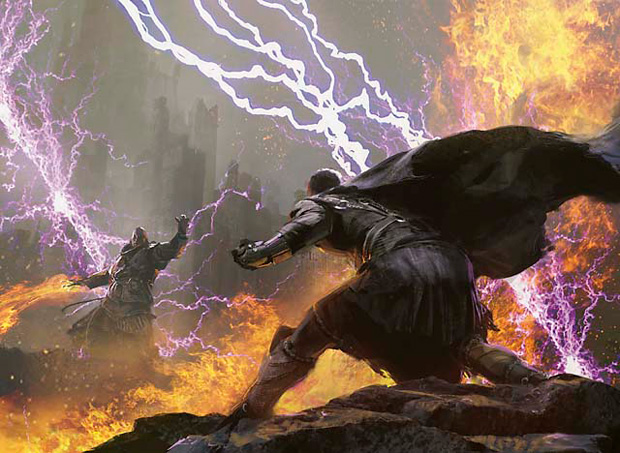
The deck’s base cards lend themselves for great matchups against the big mana decks in the format. The most notable of them being Tron, as the combo goes unharmed against their threats. The counterspells prove to be effective here at slowing them down while we develop. [card]Cryptic Command[/card] is used to bounce lands and keep the big plays in check. Another big mana deck, Bloom, proved to be a tough outing in the early explosive turns. However the deck was recently crippled by the banning of [card]Summer Bloom[/card]. The only big mana decks in the format are now Tron and Eldrazi. The latter is an unexplored matchup, but shouldn’t be a concern since, as of the writing of this article, all the Eldrazi decks are doing is cheating mana costs with [card]Eye of Ugin[/card] and Eldrazi temple to cast fair cards like Blight Herder and [card]Wasteland[/card] Strangler. The only real problem from their side is an Oblivion Sower exiling the wrong lands from the top of our deck or the occasional Ulamog, the Ceaseless Hunger putting us 2 turns behind on lands.
When talking about other control decks like Grixis and UWR, [card]Scapeshift[/card] is often favored as it is built to protect the combo with [card]Remand[/card], [card]Izzet Charm[/card] and [card]Cryptic Command[/card]. We are always ahead on mana thanks to the ramp spells. Being ahead by default against soft counters like [card]Mana Leak[/card] and [card]Remand[/card] is great for us. So far [card]Scapeshift[/card] has been favored in the matchups mentioned, and not a lot of sideboard slots should be dedicated to them, though the occasional [card]Negate[/card], Dispel or Crumble to Dust can be slotted in if the fields call for them.
The aggressive matchups, the ones [card]Scapeshift[/card] has the most trouble against. Piloting the deck to perfection becomes crucial and keeping the right hand is part of it. Besides the obvious mulligan choices, keeping a hand with lands, ramp and Shift might seem favorable, but it doesn’t take much for it to become a disaster. The Naya Zoo, Burn, Affinity, Infect and other aggressive creature decks are where [card]Sakura-Tribe Elder[/card] and Bolt shine. Not having either in the opener can mean a mull by itself. A lot of the game 1s against them become a race between you trying to hit 7 lands, and them counting down to 0 or up to 10. Knowing when to sacrifice Tribe Elder, what lands to fetch for and what spells to counter become crucial. Some draws might just not have any chance, regardless of how well you play them. That’s where most of the list’s sideboard slots go to. [card]Obstinate Baloth[/card], [card]Pyroclasm[/card], [card]Firespout[/card], [card]Thragtusk[/card], [card]Wurmcoil Engine[/card] and other big mana plays come in to allow us a chance to stabilize. The dual threat of creatures and gain life clog up the board and are usually our best options. The creature based sideboard further serves as alternative win conditions against decks that can empty your library of either Valakut or [card]Scapeshift[/card] via cards like Crumble to Dust and [card]Slaughter Games[/card].
What was the “Twin Problem”
So I’ve been selling you on the virtues of [card]Scapeshift[/card], a UR based control deck with a combo finish, but it was tier 2. It was a tier 2 deck due to the inconsistency and the complete inability to win a game without the combo. Furthermore, for the entirety of the Modern timeline you always had to face a question posed to me by good friend and Twin advocate Jeff Lee every time I went to Face to Face Games Toronto: Why on Earth aren’t you playing Twin? I would come up with some half answer like “everyone’s gunning for Twin, they won’t have sideboard slots for Scapeshift”, or “my build is strong against Twin and has similar matchups against the rest of the field”, but truly, there wasn’t much of an argument. Twin was far more consistent, both on killing the opponent and on the mana base. It could and did win a lot of games without casting [card]Splinter Twin[/card]. After boarding came use [card]Blood Moon[/card] and [card]Keranos, God of Storms[/card] as alternative win conditions. The deck was just a better control/combo deck. Now though, the tables have turned. With the ban of [card]Splinter Twin[/card], and in this new Meta, [card]Scapeshift[/card] has a chance to finally become the number 1 combo deck in the format. But that’s not the only recent change to the [card]Scapeshift[/card] archetype. A recent card printed in Battle for Zendikar has spawned what I believe to be the best version of the deck since Dig through Time left us:
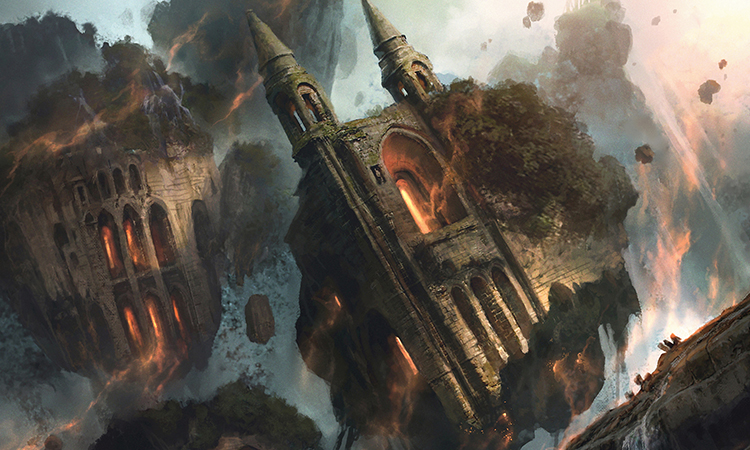
Bring To Light Scapeshift – Eduardo Tessis
[deck]
[Lands]
2 Breeding Pool
1 Cinder Glade
1 Flooded Grove
2 Forest
3 Island
4 Misty Rainforest
1 Mountain
4 Steam Vents
4 Stomping Ground
1 Swamp
2 Valakut, the Molten Pinnacle
1 Watery Grave
[/Lands]
[Spells]
1 Anger of the Gods
4 Bring to Light
4 Cryptic Command
1 Farseek
1 Hunting Wilds
2 Izzet Charm
4 Lightning Bolt
4 Remand
4 Scapeshift
4 Search for Tomorrow
[/Spells]
[Creatures]
4 Sakura-Tribe Elder
1 Snapcaster Mage
[/Creatures]
[Sideboard]
2 Dispel
1 Spellskite
1 Negate
2 Ancient Grudge
1 Krosan Grip
1 Crumble to Dust
1 Shatterstorm
1 Slaughter Games
4 Obstinate Baloth
1 Inferno Titan
[/Sideboard]
[/deck]
The addition of Bring to Light has solved, in part, the deck’s problem of not finding [card]Scapeshift[/card]. I say “in part” because BTL requires a 4th color to search for [card]Scapeshift[/card]. It adds more problems to the mana consistency, but thanks to the recent bannings of the most popular turn 4 kills in the format we suddenly have the time to find that black mana. When dealing with aggressive decks, a hand with lands, ramp, and a kill card is now a prefect keep if that kill card is Bring to Light, because you can always go snag [card]Anger of the Gods[/card] if you’re in trouble. In other versions of the deck we can get [card]Damnation[/card] or [card]Wrath of God[/card]. The card turns into multiple copies of 1 ofs. In the sideboard Crumble to Dust, [card]Shatterstorm[/card], [card]Obstinate Baloth[/card] and [card]Slaughter Games[/card] are now easier to cast. The sideboard can be changed now to fit in silver bullets against other decks, like Melira for Infect. What’s new is old again. The quiet toolkit version of [card]Scapeshift[/card] way back in the Wargate days might have some legs in this new, still not quite tuned Bring to Light version of the deck. While the [card]Gifts Ungiven[/card] list will always have a special place in my heart, this 4 color version is my favorite of the bunch. As the meta finds its ground [card]Scapeshift[/card] has its best shot of placing in the number 1 position among Modern combo decks.
– Eduardo Tessis de Castro
